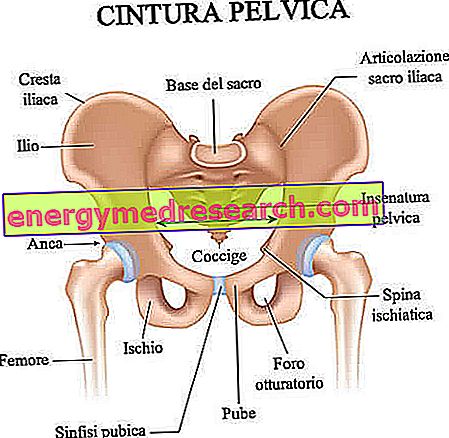Generality
Masochism is a mental disorder characterized by an attitude of passivity to mistreatment and suffering, which springs from a sort of desire for self-punishment and penance .

The masochist suffers without reacting and must suffer in order to obtain gratification or to achieve sexual satisfaction. Such fantasies, as well as sexual impulses and behaviors, cause the patient a clinically significant discomfort and a compromise in the social and work area. If taken to the extreme, masochism can evolve into a real psychopathology.
The manifestations associated with the disorder tend to usually begin in early adulthood; over time, this perversion can increase in frequency and intensity, as well as becoming chronic.
The treatment of masochism in its various manifestations is based on psychotherapeutic and, sometimes, pharmacological interventions.
Types of Masochism
Sexual masochism
In sexology, masochism is a form of perversion, which manifests itself in the need to associate erotic pleasure with conditions of physical or psychological suffering, necessary to achieve sexual excitement .
Masochism is considered a paraphilia only in cases where the search for pain is the only form of sexuality that allows the achievement of orgasm.
In the experience of many masochists, we find the memory of a punishment suffered during childhood and immediately eroticized (the origin of the disorder would therefore depend on the establishment of oedipal fantasies ).
Moral masochism
Moral mascism is a search for failure that manifests itself with the desire to be submissive . The subject finds himself living passively, without reacting, or responding in a way that is not determined and assertive, therefore he remains at the mercy of someone who can make him / her what he wants. Such action or behavior derives from unconscious feelings of guilt that call for punishment.
Female masochism
Another form of masochism is the female one, that is an attitude of passivity of women, considered essentially as a natural psychic expression of the physiological characteristics of the "fair sex". This "innate predisposition" would serve the woman to achieve "femininity".
Female masochism is also found in man due to symbolic castration during the developmental age; this would derive from an incorrect overcoming of the Oedipus complex (it leads back to childhood, when the mother manifests her love in the form of punishment or humiliation towards the child).
Sadism
Masochism is opposed to sadism, that is, the pleasure linked to inflicting bodily or psychological suffering on others, whether consenting or not. In some subjects, practices that can induce this state of satisfaction can be very violent: scratching, whipping, torturing to bleeding or causing real physical injuries. A long-fantasized and designed sadistic act is then carried out in an inevitable and obligatory manner, so much so that sadism is the basis of many crimes of rape or, in extreme cases, of murder. Sadism is particularly dangerous when it is associated with the antisocial personality disorder ; this combination is particularly resistant to any form of psychiatric treatment.
Masochism and sadism can coexist in the same person, determining a condition called "sadomasochism" .
How it manifests itself
Moral masochism
Moral masochism is dominated by an unconscious sense of guilt and self-frustrating behavior, which leads the subject to constantly assume the role of victim and put himself in a situation of humiliation. This passivity can result in a tendency to seek mistreatment to satisfy the desire for self-punishment and penance.
Unlike the sexual masochist, the moral one ignores the reasons for his behavior.
The manifestations of the disorder begin within the first adult age and occur in different contexts: almost unconsciously, the subject tries to avoid or spoil the pleasant experiences, turns his own feeling of inferiority to daily life, rejects deserved happiness and chooses people or situations that can cause disappointments, failures or ill-treatment.
The subject undertakes situations or relationships that make him suffer or seek painful circumstances, preventing any form of aid in his favor; to positive personal events (such as professional successes) reacts with depression or behaviors that cause suffering (eg accidents).
Sexual masochism
Sexual masochism is characterized, instead, by the close link between pain and sexual pleasure : the subject is able to reach a sufficient level of excitement, such as to cause an orgasm, only as a consequence of submission to physical suffering, of the state of discouragement and mistreatment inflicted alone or with the help of other people.
With respect to the moral masochist, the subject is aware of his exact condition, after this has consciously established the connection between suffering and erotic satisfaction: he intentionally participates in an activity that involves being humiliated, beaten, slapped, bound or facts subject to other types of abuse to provide sexual satisfaction.
Subjects can perform their masochistic fantasies on their own (eg by tying themselves, piercing their skin, getting electric shocks or burns) or by looking for a partner who can be a sexual sadist. In the latter case, activities include submission, eye banding, spanking, flagellation, humiliation by pissing or defecating on the person, forced disguise or simulated rape.
Erotic practices are generally planned and built in advance, with precise methods, rituals and rules . Usually, the violence demanded by the masochist is contained: many subjects carry out humiliations and beatings only at the level of simulation, acting with conscious partners that it is only a sexual game and carefully avoiding degenerations (real humiliations or physical injuries).
In some cases, however, the desire for humiliation and suffering may have no limits and, sometimes, with the passage of time (or in particularly intense moments of stress), it may take on very strong characters, potentially leading to serious injuries or, in extreme cases, to death.
A particularly dangerous practice is hypoxifilia, in which sexual excitement is caused by asphyxia carried out alone or with a partner. During the act, the subject deprives himself of oxygen through a lace, a plastic bag or the inhalation of a substance capable of causing a cerebral hypoxia, to the point of losing consciousness; this moment is often preceded by sexual fantasies in which others suffocate it or damage it.
Other masochists practice relationships without precautions, which expose them to the risk of infection and sexually transmitted diseases.
Female masochism
Female masochism is marked by an innate attitude of passivity, which can be present in both sexes. Submission occurs if the penalties are imposed by the loved one.
Physiological aspects and psychological meanings
In masochism, the pleasure of suffering pain (more correctly referred to as algolagnia ) can be explained on different levels:
- From the physiological point of view, the disorder can be related to a form of satisfaction that derives from the accentuation of unpleasant sensations: the peripheral pleasure receptors are essentially the same as those assigned to the perception of pain and, after being exposed to painful stimuli, these become more sensitive. In the masochist, therefore, painful sensations favor the brain's production of endorphins, which remain in circulation, inducing a sense of euphoria .
- From the psychological point of view, the most well-known theories on this pathology are the psychoanalytic ones, according to which the masochism derives from an incorrect overcoming of the Oedipus complex . In this context, the punishment becomes, therefore, for the child the only possible form of love that another person can show towards him.
- According to relational theories, instead, masochism could depend on the presence of a family system in which hyperprotectiveness, rigidity, separation and the absence of resolution of the conflict with a member are experienced as betrayal, and are strongly discouraged in a manner sneaky through instigating guilt .
Diagnosis
Masochism is a disorder whose course is generally chronic.
According to the Diagnostic and Statistical Manual of Mental Disorders (DSM-V), to define the problem it is necessary for a period of at least six months to manifest desires, fantasies, sexual impulses and behaviors of such an extent as to create emotional distress and interfere in the social sphere and / or work activity.
Masochism falls within the chapter of sexual disorders and gender identity, in the classification of paraphilias characterized by intense and recurrent fantasies, impulses or sexually exciting behaviors, which create discomfort or disability, suffering and / or humiliation on oneself or involving one's partner or other non-consenting persons.
Treatment
The treatment of masochism is not at all simple: often, the subject suffering from these disorders, despite being aware of it, feels a strong shame in admitting his problem.
The first therapeutic approach consists in facing the subject's psychological experience from the psychological point of view, in an attempt to recognize the origin of the repressed aggressive impulse and the need for self-punishment, deriving from an excessive and unconscious sense of guilt.
Thus introspective psychotherapy allows us to become aware of the emotional difficulties that underlie this issue. Thereafter, therapeutic interventions consist in using specific models that must be adapted to the particular case.
For those in a couple situation, sexology and couple therapy allow the submission to be scaled down, gradually replacing the deviant behavior with adequate interests, within the boundaries of sexual availability.
Depending on the severity of the disorder, some psychotherapists can advise associating a psychological treatment with a pharmacological treatment ; the aim is to reduce the masochistic impulses and, consequently, reduce the intensity and frequency of the typical manifestations of the problem.



